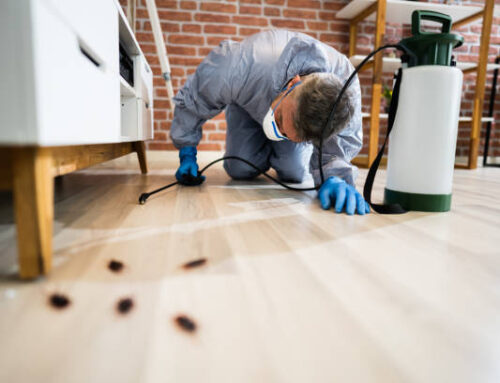Termites are small insects capable of causing massive destruction. Left unchecked, they can quietly compromise the integrity of wood, flooring, and even support beams. Structural repair after termite damage is not just about fixing what is visible; it requires understanding the full extent of infestation and ensuring the structure remains safe and sound for years to come.
This guide explores how termite damage occurs, what warning signs to look for, and how proper repair and prevention methods protect your home from future problems.

Understanding the Extent of Termite Damage
Termites feed on cellulose, the organic compound found in wood and other plant materials. When they infest a structure, they create hollow tunnels within walls, floors, and support beams. Over time, this can lead to weakened foundations and unsafe living conditions.
Early detection is key. Signs of termite damage often include:
- Blistering wood surfaces: Termites feed within wood, causing paint or laminate to bubble.
- Hollow sounds: Tapping on infested wood often produces a hollow or papery tone.
- Mud tubes: These thin tunnels along foundations or walls are used by subterranean termites for travel and moisture protection.
- Discarded wings: Wing fragments near windows or doors signal an active swarm.
Homeowners often underestimate the scale of termite destruction because it happens silently behind walls. What appears to be minor surface damage can mask a deeper structural compromise. If left untreated, the cost of repairs increases exponentially, making professional inspection and immediate action essential.
For deeper insight into how experts identify termite activity, the resource on what to expect during inspection explains how thorough examinations detect both current infestations and hidden structural vulnerabilities.
Evaluating Affected Areas Before Repair
Before any repair work begins, the full extent of the infestation must be assessed. Professionals use specialized equipment like moisture meters and acoustic sensors to determine where termites have spread and whether colonies remain active.
A comprehensive evaluation should cover:
- Load-bearing structures: Beams, joists, and foundation components must be inspected for integrity.
- Wall interiors: Termites often travel within walls, making visual damage minimal compared to internal destruction.
- Flooring and subfloor: Hollowed planks or sagging floors are red flags of extensive termite damage.
- Exterior frames: Window and door casings frequently conceal nests due to their accessibility from outdoor soil.
Once these areas are identified, all active infestations must be eradicated before repairs begin. Without treatment, repairs may be wasted if termites remain active within the structure.
Modern treatment innovations, including advanced bait systems and non-invasive liquid applications, are often used to eliminate colonies effectively. You can learn more about these techniques in our guide on innovations in termite treatments, which highlights new methods for long-term prevention and control.
Repairing Structural Damage Safely and Effectively
Repairing termite damage is a delicate process that combines carpentry, structural engineering, and pest management expertise. The goal is not only to restore the structure but to ensure future infestations cannot compromise it again.
The typical steps in structural repair include:
- Removing damaged wood: All visibly and internally compromised wood must be replaced or reinforced. Leaving damaged sections may attract new infestations.
- Treating surrounding areas: Before new materials are installed, the surrounding wood and soil are treated to eliminate any remaining termite presence.
- Replacing or reinforcing supports: Severely damaged beams or joists are either replaced entirely or reinforced with steel plates or pressure-treated wood.
- Inspecting insulation and wiring: Termites sometimes chew through insulation, and repairs should include checking for any associated damage.
- Repainting and sealing surfaces: Once repairs are complete, all treated areas are sealed to prevent moisture buildup, which often attracts termites.
This process requires precision and an understanding of load distribution and safety codes. Attempting to repair extensive termite damage without proper evaluation or professional assistance can result in structural instability and additional long-term costs.
Preventing Future Termite Infestations
Repairing termite damage is only half the battle. Without ongoing prevention, even the best repairs can become vulnerable again. Termites are highly persistent and will re-invade if environmental conditions remain favorable.
Here are the key preventive steps every homeowner should implement:
- Maintain dry surroundings: Termites thrive in damp environments. Fix leaks, direct rainwater away from foundations, and ventilate crawl spaces.
- Keep wood away from soil contact: Store firewood off the ground and away from the home’s perimeter.
- Seal cracks and gaps: Even small openings around pipes, vents, or foundations can allow entry.
- Schedule annual inspections: Routine inspections detect early signs of termite activity before it escalates.
- Use treated materials: When building or renovating, opt for pressure-treated lumber that resists termites naturally.
Homeowners should also monitor for subtle environmental changes, such as increased humidity or shifts in temperature inside walls, both of which attract termite activity. Consistent monitoring ensures that potential infestations are caught early, reducing the risk of another round of costly damage.
Integrating Professional Expertise in Long-Term Protection
Professional involvement is crucial in ensuring that termite control and structural repair efforts align seamlessly. Specialists not only eliminate current infestations but also design maintenance programs tailored to your property’s risk level and regional pest behavior.
Integrated pest management (IPM) strategies are particularly effective, combining inspection, treatment, and prevention in one continuous plan. This proactive method safeguards homes year-round and minimizes the need for future large-scale repairs.
Professionals also document the repair and treatment process, which can be valuable for insurance and resale purposes. Buyers often request termite history reports, and having verified documentation of repairs and inspections adds confidence and value to your home.
Whether your home has suffered visible termite damage or you are aiming to prevent future infestations, involving licensed experts ensures your investment remains protected. They bring precision, advanced tools, and ongoing support that go beyond the reach of DIY solutions.
Strengthen Your Home’s Foundation with Expert Help
If your property has sustained termite damage or you suspect hidden structural issues, contact E&G Exterminators for a detailed inspection and repair consultation. Our company provides advanced termite treatment, professional repair coordination, and preventative strategies that ensure your home remains secure, strong, and termite-free for years to come.






